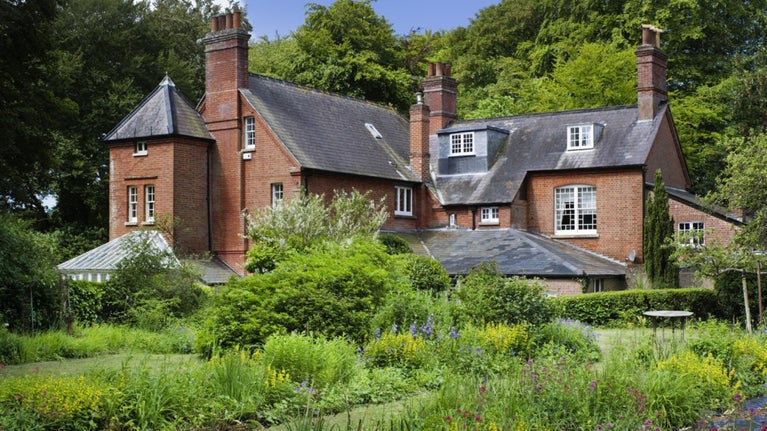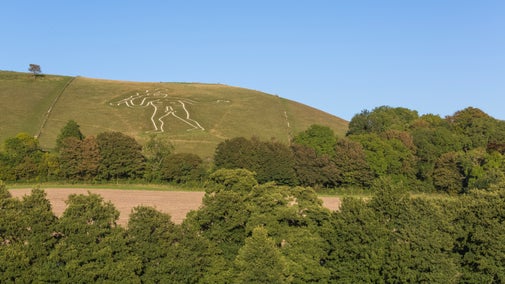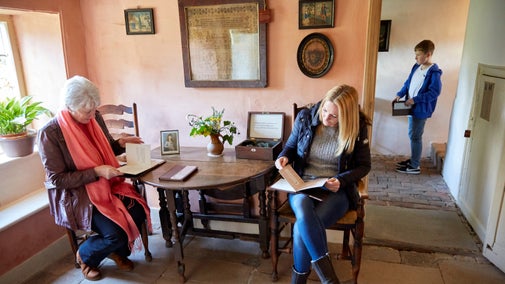
Discover more at Hardy's Cottage
Find out when Hardy's Cottage is open, how to get here, the things to see and do and more.


Thomas Hardy is famous for his novels of 19th-century rural life. Rich in description and dialect, the books are records of a vanished culture. Hardy set them in Wessex, an imaginary region mapped onto the geography of south and south-west England.
Thomas Hardy was born in 1840 near Dorchester. The son of a stonemason, he was schooled locally. He played the fiddle well enough to perform at church services and local celebrations and taught at the Sunday school.
Hardy moved to London after becoming an architect but was inspired by the customs and traditions of the people and places he knew best.
1873 saw the publication of Far From the Madding Crowd, Hardy’s first major success and his first novel set in Wessex.
His stories now had a recognisable territory. He both borrowed and invented names for the towns, villages and countryside in which they were set.
Hardy undertook extensive research and kept a number of notebooks. Among them was the Facts Notebook, started after his return to Dorset in 1883. In this he recorded snippets from the local newspaper which he turned into plots.
Readers were fascinated by Wessex and guides to its literary landmarks soon appeared.
This led to Hardy worrying that Wessex was interpreted too literally, and in the preface to the 1895 edition of Far From the Madding Crowd, he called it ‘a merely realistic dream-country’. He was a storyteller, not a reporter or historian.
Hardy’s Wessex novels are examples of naturalism, a branch of realism influenced by scientific observation.
Wessex is like a petri dish in which Hardy explores what it is to be human. However, even realist writers exaggerate and invent in order to keep their readers reading. Novels can only ever give us an impression of reality.

Hardy was born in a thatched cottage in woods near Dorchester in 1840. He wrote his early novels here, including Far From the Madding Crowd.
Hardy designed Max Gate and moved back to Dorchester in 1885. His later masterpieces were written here, including Tess of the D’Urbervilles and Jude the Obscure.
This wild heathland is thought to be the inspiration for Egdon Heath. The characters in The Return of the Native live in rhythm with its storms and shades. Hardy’s writing inspired Gustav Holst to compose the tone-poem ‘Egdon Heath’. Slepe Heath came into the care of the National Trust in November 2014 – the Trust’s largest lowland heath acquisition for a decade at the time - and it will take time to recover fully from its previous use as a forestry plantation.

The dramatic North Cornish coastline and secluded wildflower meadows of the Valency Valley were of great importance to Thomas Hardy and influenced his poetry. The fishing village of Boscastle for example, was immortalised in his poem At Castle Boterel.
This ancient naked figure sculpted into the chalk hillside above Cerne Abbas in Dorset is important to local folklore, and features in Hardy's work. In Tess of the D’Urbervilles, farmhands labour into the night to keep pace with the threshing machine as the last light fades over the Giant.
This article is written by Dr Ceri Hunter of the University of Oxford. Ceri teaches Victorian and Modern Literature and her research centres on 19th-century literature and culture.

Find out when Hardy's Cottage is open, how to get here, the things to see and do and more.

A hub for multi-disciplinary research projects and research engagement at the University of Oxford
Find out more about our Trusted Source articles, which were created in partnership with the University of Oxford, and explore topics related to the special places in our care.

Explore the simple thatched cottage where Thomas Hardy was born and raised, and the surrounding woodland landscape that greatly influenced his work.

Designed by Thomas Hardy himself, Max Gate is where he wrote some of his greatest novels and poetry, and where he lived until his death in 1928.

Boscastle is more than just a harbour village, explore woodland and see unique geological features and Atlantic ocean views.

Ancient naked figure sculpted into the chalk hillside above Cerne Abbas

From landscape gardeners to LGBTQ+ campaigners and suffragettes to famous writers, many people have had their impact on the places we care for. Discover their stories and the lasting legacies they’ve left behind.

Walk in the footsteps of famous faces. From The Beatles and Sir Winston Churchill, to Agatha Christie and Isaac Newton, step into their former homes and learn more about their lives.
